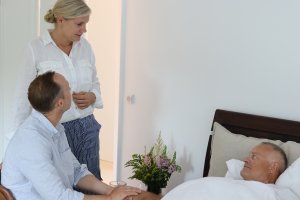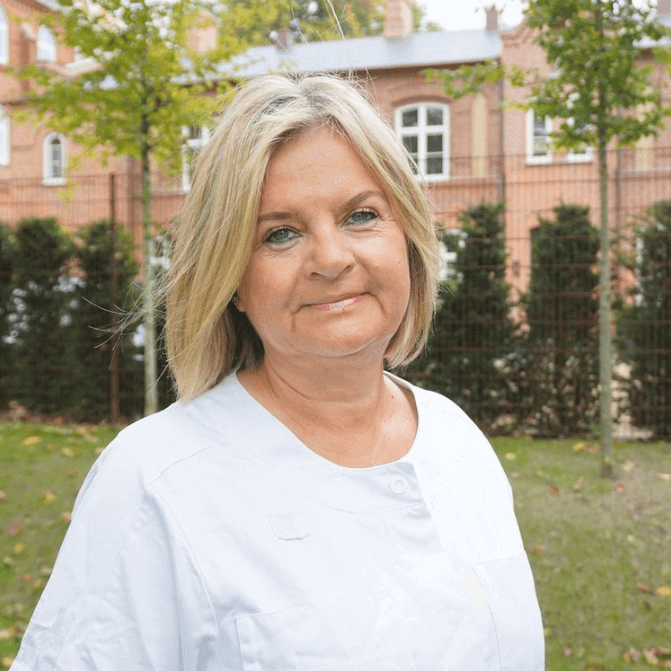Following on from our last article, here is a more in-depth article about our role and tasks for patients without relatives. Margit Egeskov here explains how these tasks differ from tasks with relatives. – And what is special about these tasks.
Some terminal patients have no relatives. How does this type of task differ from patients with relatives?
Margit describes: “It’s a little different because we kind of go in and take over the day-to-day functioning of the home. Here we are simply the patient’s extended arm. We become a kind of relative, but you are also a nurse and you are still a professional. We take care of a little bit more of the patient’s tasks.”
I will try to give an example: I have a patient whom I visit because there are no relatives and the patient is in his last days. The first thing I actually say to him is - now that we're coming with our team, I'm already taking away a lot of your worries. Something you don't have to worry about anymore, because I'll take care of them and I'll get them under control
Margit, Indehaver
Margit elaborates, “What terminal patients without relatives will experience is getting everything under control. And all the time, we coordinate with the patient. Is this what you want, is this the way we should go? – And at some point, we know the patient so well that we can actually make some decisions for them. – So they don’t have to deal with something all the time. We remove much of the worry.
How can you help when a terminal patient has no relatives?
Margit describes: “We create reassurance that things are under control. We are present and we are always within a few meters of them. So they can always get the help they need. Many times we can actually meet them before they even express their needs. We quickly get to know them and their needs.
“Often, patients without relatives are someone who has lived alone for many years. So we come and spend time with them 24 hours a day. Offering them care they haven’t had for a long time, often what happens is that the patient blossoms for a period of time.”
This happens because they have been malnourished on care. It means that sometimes those patients where you don't think there's such a long way to go, they actually get a really wonderful last time. - Because of this boom.
Margit, Indehaver
What is special about a course with terminal patients without relatives?
Margit explains: “What we see is that a very close relationship develops and I know from experience that the financial part becomes less significant. The patient does not experience it as a service as such. They experience a sincere interest and care, and it is so important that the patient experiences this sincerity. – That they experience this professionalism and professional approach to the patient. This is what provides the framework for being without relatives. – And instead have a private nurse present.
How many different nurses are in a terminal course?
Margit describes that there are usually 6-7 nurses assigned to 24-hour terminal care. The private nurses are there for 12 or 24 hours at a time. They have found that it does not matter with 6-7 nurses when they are there so long at a time. This provides continuity for both the patient and the nurses.
How do you as nurses deal with the fact that the terminal patient has no relatives? And how does it differ from a course with relatives?
Margit says: “It is clear that the patient here can be somewhat more vulnerable, and we are very aware of this vulnerability. That it is actually us who are here now and us who will be there until the very end. That vulnerability we are very conscious of, what to decide and we need to have talked to the patient in the time we are there. So we do it in the right and the best way for the patient. There is definitely a vulnerability that we take on in such a course.”
Margit explains how it differs from when there are relatives:
Of course, when you are a relative, you are also very much on your mental side. The relatives will take on some of the worries for the dying person. Of course, we are also there for some conversations and the difficult conversations - And of course, there are many of them.
Margit, Indehaver
Margit further explains that it is usually a neighbor, friend, acquaintance, accountant, or lawyer who makes the terminally ill person aware of the possibility of a private nurse. – Who can be there for the person during the last time.








